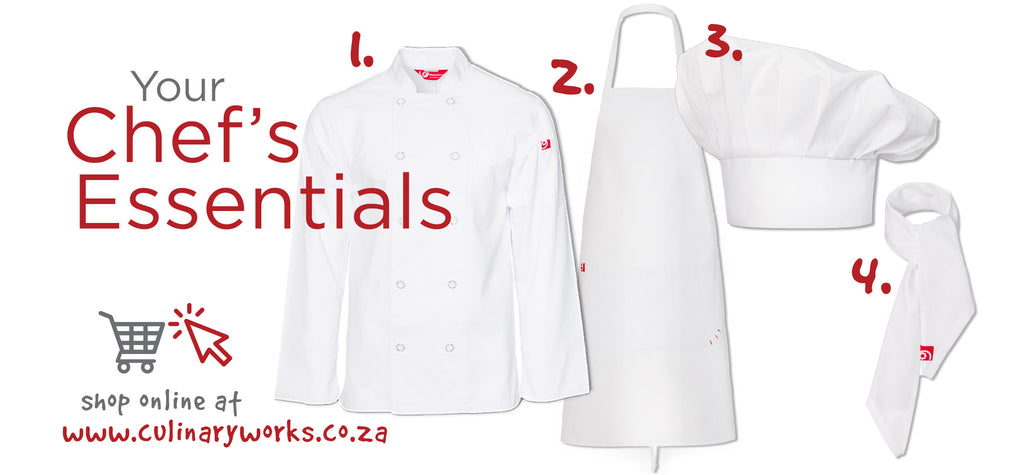A chef’s uniform is a distinctive outfit that not only looks professional but has a specific function. A commercial kitchen is a busy place, filled with potential hazards such as open flames, hot liquids, steam and slippery floors and the chef’s clothing needs to be protective as well as comfortable to work in.
These are the essential elements of a good chef’s wardrobe:
1. JACKET
A chef’s jacket is made of fabric that is non-flammable and designed to keep the wearer cool. The double breasted design can fasten both ways, allowing the chef to disguise stains by simply switching the top and bottom layers, keeping them looking calm and collected even after a busy dinner service.
2. APRON
The obvious use of an apron is protection from stains. A chef’s apron performs this function and is made of thick, durable fabric that can handle even grease and wine and stop it from soaking through onto the jacket ensuring the longevity of the chef’s wardrobe. In a professional chef’s wardrobe, it serves more of a purpose than that, though. They have heavy-duty pockets for storing utensils, and the heavy fabric means that even a knife could be stored safety. It also means that the base of the apron could be use to protect hands as the chef picks up lids of pots or removes a pan from the stove. The material is also non-flammable ensuring the wearer’s safety.
3. HAT
A trademark of the traditional chef’s uniform, the tall, white hat is iconic. It serves more of a purpose than symbolising the profession, however, and is designed to protect both the cook and the customer. The customer is protected as the hat ensures that the chef’s hair does not end up in their food, while the hat ensures that the chef’s hair doesn’t become entangled in anything in the kitchen.
4. NECKERCHIEF
The neckerchief’s primary function is to catch sweat from around the head and neck and prevent it from falling in the food. It can also be untied and used to dab the face and brow. It also looks professional and completes the uniform, which is why many restaurants include it as part of the uniform even though the kitchen is airconditioned.
5. SHOES
Comfort and protection are key to a good pair of chef’s shoes. It’s a busy job that keeps the chef on their feet for 12 hours or more per shift and a good pair of shoes ensures that a chef’s feet and back are protected from strain. Heavy and sharp objects also abound in professional kitchens and dropping something on toes or feet could do serious damage. For this reason, chef’s shoes are sturdy and durable. Liquids on the floor can also lead to slipping and chef’s shoes have soles with good grip to avoid them taking nasty tumbles.
In conjunction, all of these elements of the chef’s wardrobe work together to protect the chef and keep them comfortable and able to focus on what they do best – producing delicious meals.





